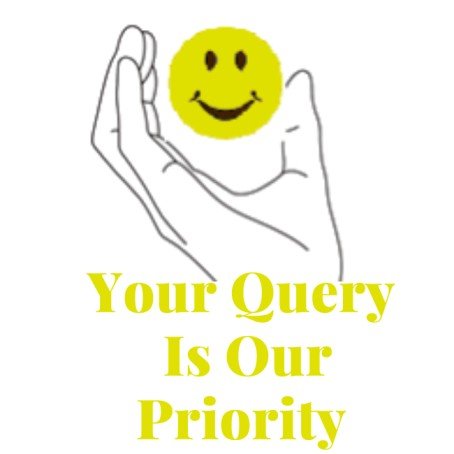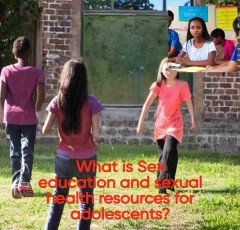
What is Sex education and sexual health resources for adolescents?

Learning about sexual development, reproductive health, relationships, and the psychological and physical elements of sexuality is known as sex education.
Adolescents should have access to thorough and accurate sex education so they can make educated decisions about their relationships and sexual health.
Resources for sexual education and adolescent sexual health include:
Comprehensive sex education programs:
These courses cover topics like consent, healthy relationships, contraception, sexually transmitted infections (STIs), sexual health, and reproductive rights.
Online resources:
A variety of websites, including those run by Planned Parenthood, Scarleteen, and Sex, Etc., offer information about sexual health.
Healthcare professionals:
Healthcare professionals can offer unbiased, confidential advice on sexual health as well as options for STI testing and birth control.
Peer education initiatives:
Peer education initiatives entail young people educating their peers about relationships and sexual health.
Books and other written materials:
Numerous books and other written resources, such "The Guide to Getting It On" by Paul Joannides and "Our Bodies, Ourselves" by the Boston Women's Health Book Collective, contain information about sexual health, relationships, and consent.
Teenagers should have access to accurate and thorough knowledge on sex and sexual health in order to make educated decisions and safeguard themselves against unfavorable outcomes.
Additionally, it's critical for parents and other adults to talk openly and honestly with teenagers about sex and sexuality.
Adolescents may feel more at ease asking questions and getting advice when they need it as a result. It's critical to handle these discussions delicately and to respect the worries and opinions of teenagers by listening to them.
It is crucial to address the social and cultural aspects that can affect teenage sexual behavior in addition to offering information and resources on sexual health. Issues relating to gender, sexuality, race, ethnicity, and other factors may be among these.
Resources for sexual health and sexual education for teenagers should be complete, accurate, and easily available.
They should educate people on a variety of subjects, such as sexually transmitted diseases, relationships, consent, and reproductive health. Additionally, they should address the social and cultural issues that may affect teenage sexual activity and encourage positive sexual attitudes and practices.
It is important to keep in mind that sex education and resources for sexual health for teenagers can differ based on the cultural, social, and legal environment in which they are offered. For instance, some nations or areas might have more conservative views on sex education and might restrict access to particular material or tools.
Resources for sexual health and sex education should always be evidence-based and non-judgmental.
Age-appropriate, culturally aware, and inclusive of all perspectives and identities, they should provide knowledge.
The purpose of sex education and sexual health materials for teenagers is to provide young people the information they need to make educated decisions about their bodies and romantic relationships, as well as to support positive attitudes and behaviors surrounding sexuality.
We can assist young people in navigating this significant element of their life with confidence and dignity by giving accurate information, encouraging open communication, and addressing social and cultural variables that can influence adolescent sexual activity.
It's also critical to remember that sexual health and education materials ought to cover topics like consent and sexual assault.
Adolescents must comprehend the meaning of consent and how to discuss it with others. Additionally, they must know what sexual violence is, how to spot it, and how to handle it. This includes educating people on how to maintain healthy relationships, identifying abuse, and reporting instances of sexual violence.
For teenagers who may be more likely to experience sexual violence or other types of damage, it may occasionally be crucial to offer specific resources.
Youth from marginalized communities, such as LGBTQ+ youth, youth with disabilities, and youth, may encounter more difficulties in gaining access to supports for sexual health or may be more at risk of harm.
In order to improve adolescents health and wellbeing, comprehensive sex education and sexual health resources must be made available to them. We can assist young people in making educated decisions about their bodies, their relationships, and their futures by ensuring that they have access to accurate information, helpful tools, and a secure and inclusive learning environment.
It is more crucial to understand that providing teenagers with resources for sexual health and education is a continuous process rather than a one-time event.
Adolescents may need support and direction as they navigate unfamiliar situations or interpersonal connections at various phases of their development. As a result, it's crucial to offer continual opportunities for education and support as well as to make sure that resources are available when they're needed.
To advance adolescents' health, wellbeing, and autonomy, comprehensive sex education and sexual health resources are necessary.
We can assist young people in making decisions about their bodies and identities by ensuring that they have access to reliable information, helpful tools, and a safe and inclusive learning environment.
To involve young people in the creation and delivery of sex education and sexual health resources.
Involving adolescents can assist guarantee that resources are pertinent and efficient since they bring unique viewpoints and experiences to the design and execution of these programs. Involving young people in peer education initiatives, establishing youth advisory councils, or holding focus groups and surveys to get comments and insights are all possible ways to go about this.
Should take into account the larger social and structural variables that can affect the sexual health of adolescents.
These may involve problems with access to healthcare, prejudice, and poverty. Advocacy, policy alterations, and cross-sector collaboration may be necessary to address these concerns.
Adolescent sexual health education and resource provision is a challenging, ongoing process that calls for a multifaceted strategy.
We can guarantee that young people have the information, abilities, and resources they need to make wise decisions about their bodies and their relationships by incorporating young people in the process, addressing social and structural issues, and offering continuous education and support.
It is important to remember that while some parents or caregivers might find it awkward to talk about sex education with their kids, research has shown that parent-child conversations about sexuality can have beneficial effects, such as promoting the use of contraceptives when sexually active and postponing sexual activity.
As a result, it's critical to support and equip parents and other adults who care for children with the knowledge and tools they need to talk to them about sex and sexuality in an open and honest way.
In order to equip teenagers with resources for sexual education and sexual health, schools and healthcare professionals are crucial.
The anatomy of sex, puberty, relationships, consent, and contraception are just a few of the many topics covered in comprehensive sex education that schools can provide. Healthcare professionals can give private, non-judgmental services such as screenings for STDs, advice on contraception, and referrals to extra resources as necessary.
Promoting adolescents's health and wellbeing requires offering them resources for sexual education and sexual health.
We can support young people in making educated decisions about their bodies and their relationships, and ultimately lead healthy and satisfying lives, by ensuring that they have access to reliable information, helpful tools, and a safe and inclusive learning environment.
The encouragement of safe and healthy sexual practices is a crucial component of sex education and sexual health resources for teenagers.
Included in this is instruction on sexually transmitted infection (STI) prevention and contraception. Adolescents need to be aware of the various forms of contraception that are available, how they work, and how to use them properly. Additionally, they must comprehend the dangers of unprotected sex and the significance of routine STI testing.
It's crucial to address problems with media literacy, self-esteem, and body image.
Through the media, social media, and peer pressure, adolescents may be exposed to unrealistic and damaging images and messages about sex and sexuality. supplying them with information and tools to aid in the development of a positive sense of self and healthy attitudes regarding sex and sexuality can help reduce the negative impact.
To talk about the cultural and societal influences on adolescent sexual behavior.
These could involve problems with gender roles, power relationships, and social expectations on sex and sexuality. We can lower the risk of sexual assault and encourage good and respectful sexual experiences for all adolescents by fostering healthy and equitable relationships and addressing damaging preconceptions and biases.
A multifaceted strategy is needed to effectively provide comprehensive sex education and sexual health resources for teenagers.
We can support young people in developing a positive self-image and healthy attitudes toward sex and sexuality by promoting safe and healthy sexual behaviors, addressing social and cultural factors that may influence adolescent sexual behavior, and offering education and resources to support this.
By doing this, we can make sure that young people have the information, skills, and resources they need to make wise decisions about their bodies and their relationships.
To remember that resources for adolescent sexual health and sex education should be inclusive and sensitive to cultural differences.
This entails identifying and attending to the distinct needs and experiences of various populations, including those who might have obstacles in gaining access to healthcare or who could encounter prejudice or stigma because of their sexual orientation, gender identity, or cultural origin.
All young people's needs should be met via inclusive and culturally sensitive sex education and sexual health resources, regardless of their color, ethnicity, sexual orientation, gender identity, or other traits. Providing services and resources in languages other than English, addressing issues relating to prejudice and stigma, and customizing educational resources and materials to be culturally relevant and responsive are a few examples of how to do this.
We can guarantee that all adolescents have access to the knowledge and tools they need to make knowledgeable decisions about their bodies and their relationships by promoting inclusive and culturally sensitive sex education and sexual health resources. This can support health equity for all young people and lessen health inequities.
Adolescents's health, wellbeing, and autonomy must be promoted by offering them comprehensive, inclusive, and culturally appropriate sexual health and education materials. We can support young people in making educated decisions about their bodies and their relationships, and ultimately lead healthy and satisfying lives, by ensuring that they have access to reliable information, helpful tools, and a safe and inclusive learning environment.
For teenagers to be healthy, happy, and autonomous, sexual education and sexual health resources are crucial.
These materials should include a variety of subjects relating to sexual and reproductive health, such as anatomy, puberty, relationships, consent, contraception, and the prevention of sexually transmitted infections. They should also be thorough, inclusive, and culturally sensitive.
Resources for teen sexual health and sex education should be made available by parents, schools, and healthcare professionals.
Parents and other adults who look after children should be urged to talk openly and honestly with them about sex and sexuality, as well as given the knowledge and tools necessary to do so successfully. Comprehensive sex education can be provided in schools, and private medical services can be obtained with no judgment.
Sex education and sexual health resources for teenagers should include the promotion of safe and healthy sexual activities as well as issues with body image, self-esteem, and media literacy. They should also address social and cultural variables that may have an impact on adolescent sexual behavior.
We can assist young people in making educated decisions about their bodies and their relationships, and ultimately lead healthy and satisfying lives, by ensuring that they have access to reliable information, encouraging tools, and a safe and inclusive learning environment.
The creation of a secure and encouraging environment in which teenagers can learn about sex and sexuality and ask questions is equally as vital as providing them with information and resources.
This entails making a place where teens feel safe expressing questions and getting support that is devoid of shame, stigma, and judgment.
By being understanding, affirming, and attentive to the needs and experiences of teenagers, healthcare professionals, educators, and parents can all contribute to the development of this supportive environment. This entails speaking inclusively and avoiding preconceptions or prejudices regarding gender, sexuality, or other traits.
Should understand that sex education and services for sexual health are not a one-time thing or an intervention.
Instead, they should be a continuing procedure that changes and adapts over time to accommodate teenagers' growing needs and experiences. As teenagers develop, this can entail offering additional instruction and resources, or it might entail modifying curriculum to address new concerns or sexuality-related fads.
An important public health concern that can help to promote young people's health and well-being and lower the risk of unfavorable health outcomes connected to sex and sexuality is the provision of comprehensive and inclusive sex education and sexual health resources for adolescents.
It is crucial to involve teenagers in the creation and assessment of sex education and sexual health resources for them in order to ensure their efficacy and suitability. This may entail asking teenagers for feedback on the knowledge and tools they require, as well as the presentation and distribution of these tools.
Resources for sexual health and education should be evidence-based, which means they should be based on the most recent studies and industry standards. This can ensure that the tools and information offered are reliable, current, and efficient in encouraging healthy sexual behaviors and lowering the risk of adverse health consequences.
Must understand that offering sexual health information and education to teenagers does not replace receiving full medical care.
Encourage sexually active adolescents to seek out healthcare treatments, such as contraception, STI testing and treatment, counseling, or support services, if they have concerns about their sexual health.
Adolescents' health, wellbeing, and autonomy must be promoted by offering them comprehensive, inclusive, and culturally appropriate sexual health and education materials. This entails giving precise information, establishing a secure and encouraging environment, integrating youth in the creation and assessment of these resources, utilizing evidence-based techniques, and appreciating the significance of complete healthcare services.
Additionally, sex education and sexual health resources should not be seen as a "taboo" or "controversial" topic but rather as a crucial component of advancing young people's general health and wellbeing. We can empower young people to take control of their bodies and their relationships by arming them with correct knowledge and encouraging tools, enabling them to have healthy and satisfying lives as a result.
It's also critical to understand that there is no one-size-fits-all method for offering sexual health information and education to teenagers.
Diverse populations, including individuals who could have obstacles to receiving healthcare or who might encounter prejudice or stigma because of their sexual orientation, gender identity, or other factors, must be acknowledged and their particular needs and experiences must be addressed.
To guarantee that resources for sex education and sexual health are inclusive of all youth and suit their needs, it is essential to involve young people in their development and evaluation. Additionally, tools for sexual health and education should be evidence-based, sensitive to cultural differences, and comprehensive in character, covering a range of subjects relating to sexual and reproductive health.
In summary, providing adolescents with thorough, inclusive, and culturally sensitive sex education and sexual health services is essential for fostering their health, well-being, and autonomy. In order to make sure that these tools are successful and satisfy the needs of various populations, they should be created and assessed in conjunction with young people and healthcare experts.

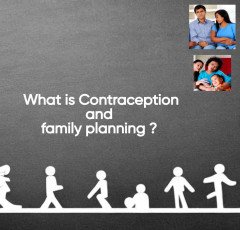



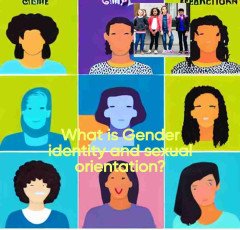









 Online Technology Classes
Online Technology Classes  Best Home Appliances
Best Home Appliances  Realme Smart Phone
Realme Smart Phone  Best Selling Books
Best Selling Books  BEST SELLER TOP10
BEST SELLER TOP10  Healthy Ingredients
Healthy Ingredients  Graphics & Design
Graphics & Design  Rakhi
Rakhi  Amazon Best Selling Products
Amazon Best Selling Products  Air Purifier for Home
Air Purifier for Home  Sennheiser
Sennheiser  The Click Engine
The Click Engine  Bathroom Mirrors
Bathroom Mirrors  ASUS Laptop
ASUS Laptop  Favorite Company (Cuelinks)
Favorite Company (Cuelinks)  Wireless Bluetooth Earphones
Wireless Bluetooth Earphones  Acer Laptop
Acer Laptop  Wall Lamp
Wall Lamp  NordPass
NordPass  Crocs
Crocs  iPhone cable
iPhone cable  NordVPN
NordVPN  Best Phone
Best Phone  SOFAS
SOFAS  Echo Dot - Smart speaker with Alexa
Echo Dot - Smart speaker with Alexa  Wristbands
Wristbands  Artificial Intelligence
Artificial Intelligence 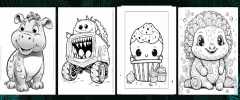 1150+Trendy kids coloring pages Bundle
1150+Trendy kids coloring pages Bundle  Hot Bags For Pain Relief
Hot Bags For Pain Relief  Online Marketing
Online Marketing  Kitchen Daily Use
Kitchen Daily Use  RPM 3.0
RPM 3.0  Men Clothing
Men Clothing  Women Fashion
Women Fashion  NordLocker
NordLocker  Digital Voice Recorder
Digital Voice Recorder  SEO Checklist
SEO Checklist  Puma (Clothing & Accessories)
Puma (Clothing & Accessories)  ELECTRONIC ACCESSORIES
ELECTRONIC ACCESSORIES  Prime Video
Prime Video  Pet Care Products
Pet Care Products  Kitchen Tap
Kitchen Tap  Door Handle Collection
Door Handle Collection  4k Projector For Home
4k Projector For Home  Top Rated From Amazon
Top Rated From Amazon  Dell Laptop
Dell Laptop  Smart Doorbell
Smart Doorbell  TitTok Revolution
TitTok Revolution  HP Laptop
HP Laptop  All Wireless Products
All Wireless Products  Creative Brief For Video Shoot
Creative Brief For Video Shoot  Hello Theme
Hello Theme  Wireless Gaming Mouse
Wireless Gaming Mouse  Smart Watches
Smart Watches  Adidas Shoes
Adidas Shoes  One World Collection
One World Collection  Unlimited access to classes on illustration, photography, design, film, music
Unlimited access to classes on illustration, photography, design, film, music  Duke T Shirts
Duke T Shirts  Best Robotic Vacuum Cleaners
Best Robotic Vacuum Cleaners  Samsung Mobile
Samsung Mobile  Unreal Engine 5 For Beginners Learn The Basics Of Virtual Production
Unreal Engine 5 For Beginners Learn The Basics Of Virtual Production  Stylish Sneakers by Red Tape
Stylish Sneakers by Red Tape  Best Sellers On Amazon
Best Sellers On Amazon  Apple iPhone
Apple iPhone  LCD Writing Tablet
LCD Writing Tablet  Only For The United States
Only For The United States  Dual USB Car Charger
Dual USB Car Charger  Motion Sensor Light
Motion Sensor Light  ASPINAL LONDON
ASPINAL LONDON  Essentials for Gamers
Essentials for Gamers  The Secret Email System
The Secret Email System  Home Decor Items
Home Decor Items  Hanging Lights For Living Room
Hanging Lights For Living Room 


















